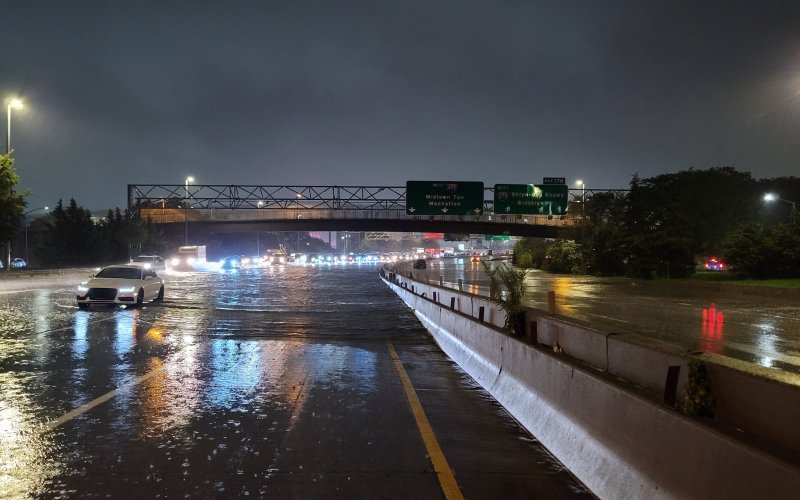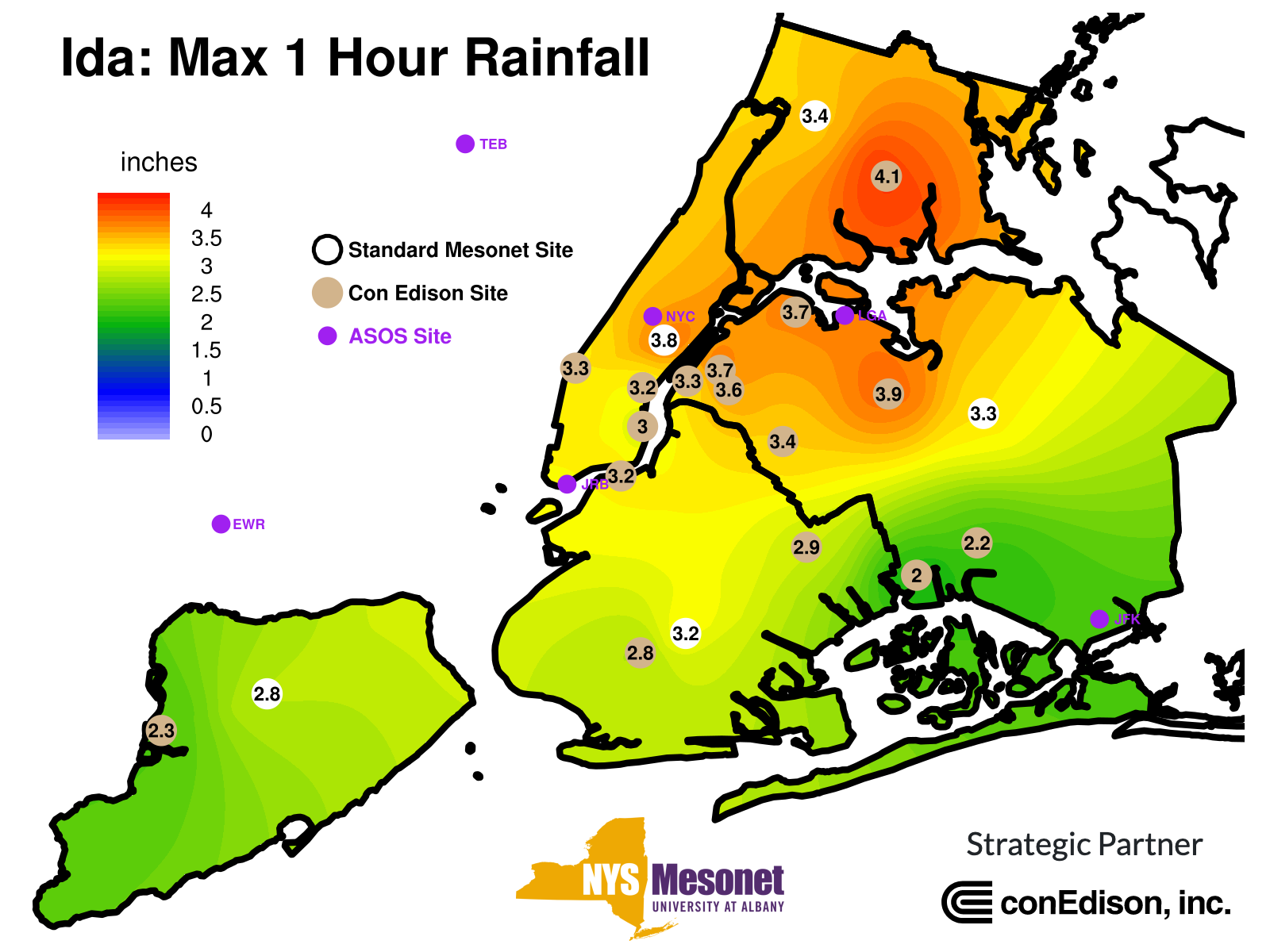Ida Dumps Record-Breaking Rain at New York State Mesonet Network Sites

ALBANY, N.Y. (Sept. 7, 2021) – The remnants of Hurricane Ida battered the Northeast last Wednesday night, bringing tornadoes, heavy rain and flash flooding that took lives and left many areas under a state of emergency.
Its impacts on the metropolitan area were reminiscent of hurricanes Sandy and Irene, both of which inspired the creation of the New York State Mesonet. Headquartered at the University at Albany, plans for the NYS Mesonet were announced in 2014. The network launched a year later. It includes 126 standard weather stations located around 20 miles apart statewide, including at least one in every county and borough.
“Effectively, the entirety of New York City experienced serious flooding from massive rainfall, which came on the heels of another tropical system just 10 days earlier that also produced extreme rainfall,” said Nick Bassill, director of research and development at UAlbany’s Center of Excellence in Weather and Climate Analytics, who was live-tweeting updated rainfall numbers until the wee hours of the morning on Thursday.
“The images and videos were hard to fathom. After four-years, the NYS Mesonet broke its network-wide 24-hour rainfall record nine days ago during Henri. Three stations broke that new record on Wednesday night, one by over an inch. It's analogous to the MLB home run record being 73 home runs and then someone hitting 85.”
Every standard NYS Mesonet weather site in New York City recorded more than 5.6 inches of rain during Ida, and all the NYC Micronet sites, comprised of 17 additional weather-monitoring stations within the five boroughs at Con Edison-owned properties, recorded at least 3.9 inches.
The Staten Island, Manhattan and Bronx stations recorded 8.4, 7.5 and 7.4 inches, respectively. All three totals broke the previous NYS Mesonet network record. One-hour rainfall records were set at eight stations: Manhattan, Bronx, Queens, Brooklyn, Staten Island, Stony Brook, Suffern and Somers.

The NYS Mesonet was referenced by Gov. Kathy Hochul and the National Weather Service and did what it was intended to – create situational awareness and improve resiliency for New Yorkers around extreme weather events.
“Data from the NYS Mesonet aids emergency management across the state during storms such as this one,” said Jerry Brotzge, NYS Mesonet Program Manager. “It is ingested in real-time into National Weather Service numerical model forecasts, improving predictions well in advance of storm activity. During an event, Mesonet data and camera information is monitored directly by the NWS, the State Department of Homeland Security and Emergency Services, transportation authorities and utilities.
“We’re proud to help improve situational awareness and optimize resource deployment to maximize public safety and minimize economic loss and disruption. Our network has become a critical piece to monitoring hazardous weather and averting disasters for New Yorkers.”
Along with providing weather data, numerous media outlets turned to UAlbany’s atmospheric scientists for insight on Hurricane Ida and the role climate change has played in these increasingly extreme weather events, including:
- Brian Tang, associate professor in the Department of Atmospheric and Environmental Sciences (DAES), who was live on MSNBC with Nicolle Wallace. He was also featured in articles about Hurricane Ida in The Washington Post and Mashable.
- DAES professor Aiguo Dai, who was quoted by The New York Times about Hurricane Ida and global warming.
- Bassill, who was quoted by Mashable, USA Today and The Washington Post shared one of his NYS Mesonet graphics. Yale Climate Connections and the Brooklyn Eagle also cited NYS Mesonet rainfall data.
Follow @NYSMesonet on Twitter for weather updates and other news about the network. The NYS Mesonet mobile app is also available for download through Apple and Google Play stores.




